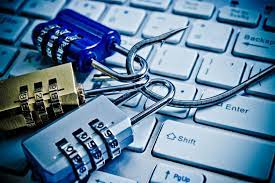Recognizing suspicious email and communication patterns is crucial in identifying potential online fraud attempts. Fraudsters often use deceptive tactics to trick individuals into revealing sensitive information, making financial transactions, or carrying out other fraudulent activities. Here are some common suspicious email and communication patterns to watch out for:
- Unsolicited Emails: Be cautious of unsolicited emails, especially those from unfamiliar or unknown senders. Fraudsters often send mass phishing emails to a large number of recipients in the hopes of tricking someone into falling for their scam. Exercise caution when receiving emails that claim you’ve won a contest or lottery you didn’t participate in or offer unexpected rewards or inheritance.
- Urgency and Threats: Fraudulent emails often create a sense of urgency or use threats to manipulate victims into taking immediate action. For example, they may claim that your account will be closed or suspended unless you provide personal information or make a payment urgently. Be skeptical of such emails and independently verify the legitimacy of the request through official channels.
- Poor Grammar and Spelling: Many fraudulent emails exhibit poor grammar, spelling mistakes, or language that seems unprofessional. While not all legitimate emails are flawlessly written, a high number of errors can be a red flag indicating a potential scam.
- Requests for Personal Information: Be wary of emails or messages requesting personal information such as passwords, Social Security numbers, bank account details, or credit card information. Legitimate organizations typically do not ask for sensitive information via email. Avoid providing such details unless you can verify the authenticity of the request through a trusted and secure channel.
- Suspicious Links and Attachments: Exercise caution when encountering links or attachments in emails, particularly from unknown or suspicious sources. Hover over links (without clicking) to view the actual URL and ensure it matches the claimed destination. Avoid downloading or opening attachments unless you are confident in their safety. Malicious attachments can contain malware or ransomware that can compromise your device or data.
- Impersonation of Trusted Entities: Fraudsters often impersonate well-known organizations, financial institutions, or government agencies to gain trust and credibility. Double-check the sender’s email address, as scammers may use similar-looking addresses to deceive recipients. If in doubt, contact the organization directly through official channels to verify the authenticity of the communication.
- Unexpected or Unusual Requests: Be cautious if an email or communication contains unexpected or unusual requests, such as transferring funds to unfamiliar accounts, providing access to sensitive systems, or sharing confidential information. Always verify such requests through trusted channels before taking any action.
- Generic Greetings: Pay attention to generic or vague greetings in emails, such as “Dear Customer” or “Valued Account Holder,” instead of using your name or a personalized greeting. Legitimate organizations typically address individuals by their name in official communications.
- Poorly Formatted Emails: Emails with inconsistent formatting, unusual fonts, or distorted logos and graphics may indicate a fraudulent attempt. Legitimate organizations usually maintain consistent branding and professional email templates.
- Unusual Sender Domains: Check the domain of the sender’s email address. Fraudulent emails may use domains that resemble those of legitimate organizations but with slight variations or misspellings. For example, “paypa1.com” instead of “paypal.com.”
If you encounter suspicious email or communication patterns:
- Do not click on any links or download attachments from suspicious emails.
- Do not reply to or engage with suspicious messages.
- Avoid providing personal, financial, or sensitive information unless you can independently verify the legitimacy of the request.
- Report suspicious emails or communication to your email service provider, organization’s IT department, or the appropriate authorities.
By staying vigilant and being cautious of these suspicious patterns, you can better protect yourself against online fraud and phishing attempts
SHARE
